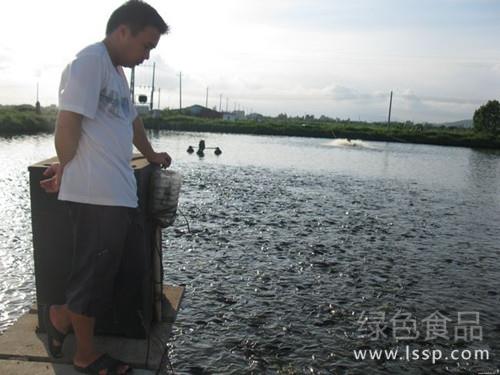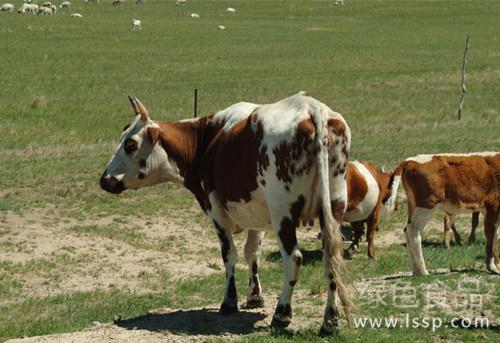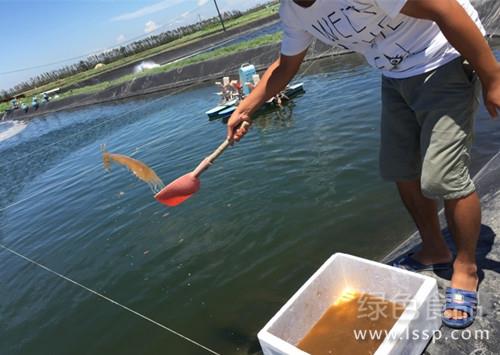How to save feed when raising tilapia with too much feed and worsening water
In the process of farming, due to the one-sided pursuit of tilapia production, many farmers continue to put in feed and fertilizer, which not only increases the cost, but also worsens the water quality, affects the growth and survival of tilapia, and leads to low benefit. So, how to save the feed cost of tilapia in production practice?

Tilapia feeding
First, strict cleaning and disinfection of ponds, removal of wild miscellaneous fish, etc.
Cleaning pond disinfection can not only kill wild miscellaneous fish, reduce food targets, but also kill pathogenic factors, improve water quality, and make tilapia have a good growth environment. There are more wild miscellaneous fish and shrimp in the pond, which compete for food with tilapia, and ferocious fish even eat tilapia, which reduces the feed utilization rate, so it is necessary to remove it. Therefore, both new and old ponds must be cleaned and disinfected before releasing seedlings. The old pond removes too much silt, leaving only 10cm sediment. Pond cleaning and disinfection was carried out 10 to 15 days before stocking in order to kill pathogens and enemy organisms. Generally, there are two kinds of cleaning ponds with dry method or with water: when cleaning ponds by dry method, about 75 kg of quicklime per mu or 4 kilograms of bleaching powder; when cleaning ponds with water, about 150 kg of quicklime is scattered throughout the pond to mix the soil at the bottom of the pond with quicklime as far as possible, so as to thoroughly kill parasites, pathogens, wild miscellaneous fish, etc., reduce the object of contention for food, and improve the utilization rate of feed.
Second, rational stocking to ensure the mutually beneficial symbiosis of fish:
In order to improve the survival rate of tilapia and reduce feed waste, stocking density and breeding fish are very important. At present, pond culture and cage culture can be used, mixed culture fish are mainly silver carp, bighead carp, grass carp, carp, freshwater white Pomfret and so on. Every spring, when the water temperature rises steadily above 15 ℃, winter seedlings can be released. In order to control the water quality, 1500mur3000 tilapia fingerlings were stocked, while 40Mu70 silver carp and bighead carp species were mixed to control the water quality. When mixed with other fish, 200MUE 500 fish per mu were released. Tilapia can be raised alone, mainly or in combination in cages. Large size is better for fish species, and the tail weight is 10g ~ 50g, with an average of 30g. The stocking amount should be determined according to the water quality conditions. When the dissolved oxygen content is more than 3 mg / L, the stocking amount is 3 kg ~ 20 kg per cubic meter of water. In addition, with the continuous growth of the fish body, in order to adjust the breeding density and improve the efficiency, the fish can be caught in batches and released in rotation, so as to adjust the fish carrying capacity in the water body and improve the feed return rate.
Third, fertilizing and feeding scientifically to improve the utilization rate of feed:
Fertilizer and bait not only affect the growth of tilapia, but also affect the change of water quality. Tilapia in natural waters mainly feed on benthos, aquatic insects, zooplankton, rotifers, organic detritus, macroalgae, etc., it can use plankton as food, of course, prefer artificial feed. In aquaculture, appropriate fertilization can also be used to make plankton grow well and increase dissolved oxygen and nutrients in the water to assist the growth of fish. Before stocking, sufficient basal fertilizer can be applied to improve the nutritional status of the sediment and increase the nutrients in the pond, which is conducive to the growth of natural bait. 250 kilograms per mu, such as rotten chicken manure. In the middle period of culture, topdressing can be applied once every 20 days according to the water quality, and each mu of nitrogen fertilizer and phosphate fertilizer is 2 kilograms and 1 kilogram, and a small amount of duckweed or duckweed can be put in the pond to supplement the vitamin demand of tilapia.
Tilapia has a wide range of food habits, in artificial feeding, can be fed a variety of feed, such as wheat, corn, cake and so on. In the initial feed, the protein content is 32%-35%, and the daily feed amount is 3%-5% of the total body weight of the fish. When the individual size is about 200 grams, the feed amount is adjusted to 2%, and the protein content is 27%-29%. When the individual reaches about 300 grams, tilapia enters the fastest growth period, with a daily feed intake of 1%-2% and a protein content of more than 35%. Feed can be mixed with its own mixture, but it is best to process it into particles. We should pay attention to the "four determinations". Feed more than 2 times a day, encourage a small number of times, and feed at 8-9 am and 3-4 pm when dissolved oxygen is sufficient. In general, the amount of bait is difficult to master, too much causes waste, and too little is not full, which is not conducive to growth. It is best to set up a bait table, set up several bait tables around the pond, sprinkle them evenly along the pond during feeding, and check the feeding condition of tilapia after feeding 1.5 mi for 2 hours. under normal circumstances, if the satiety rate accounts for 60%-70%, the feeding is reasonable; if the satiety rate is too high, the feeding amount will be reduced; if it is too low, the feeding amount will be increased. At the same time, it should be adjusted according to the weather, fish growth, water quality, etc., when the weather is sunny, the wind and the sun is warm, feed more; when the weather is bad, it is cloudy and rainy, and when the weather is muggy or cold, feed less or not; tilapia grow exuberantly and without disease, properly feed more, and vice versa; when the water quality is fresh and the dissolved oxygen is sufficient, tilapia can be fed normally. When the water quality is poor and the dissolved oxygen is low, it will be fed less or not.
Fourth, regulate the water quality regularly to provide a good environment:
The water quality of fish culture first affects the growth speed and feed coefficient of tilapia. Tilapia likes fresh water quality, good water quality, rapid growth and less diseases, so it can make full use of bait and reduce the feed coefficient. Therefore, in breeding tilapia, attention should be paid to adjusting the water quality and keeping the water fresh. It is generally required that the water is yellow-green, the transparency is 30ml / 40cm, and the dissolved oxygen is above 3mg / L. When aquaculture in ponds, the water should be changed frequently to maintain fresh water quality and strictly prevent floating heads and flooding ponds. Generally, the fresh water is changed every 15 days, and the water is changed by 10ml / 20cm each time, so that the water level of the pond is kept at about 1.5 meters. In the high temperature season, the times of changing water can be increased appropriately. During the breeding period, depending on the weather, water temperature and fish feeding, the aerator should be opened appropriately to increase oxygen. When the weather changes, the air pressure is low, and the dissolved oxygen in the water is less than 3 mg / L of fish floating head, it is necessary to increase the start-up frequency and start-up time. Reservoir cage culture, to often brush the box, wash off the cage dirt and attached algae, so that the water body is fully exchanged, but also regularly check the box, find damage and repair in time, so as to avoid running fish or ferocious fish into the box. When necessary, it is necessary to constantly adjust the cage, with the fluctuation of the water level in the reservoir, adjust the cage to a suitable position of water depth, so that tilapia has a good feeding environment.
- Prev

Prevention and treatment of dyspepsia and nibbling cattle pica
Prevention and treatment of dyspepsia and nibbling cattle pica
- Next

If you don't have enough to eat, you can't even eat too much. Shrimp feed is very fastidious.
If you don't have enough to eat, you can't even eat too much. Shrimp feed is very fastidious.
Related
- On the eggshell is a badge full of pride. British Poultry Egg Market and Consumer observation
- British study: 72% of Britons are willing to buy native eggs raised by insects
- Guidelines for friendly egg production revised the increase of space in chicken sheds can not be forced to change feathers and lay eggs.
- Risk of delay in customs clearance Australia suspends lobster exports to China
- Pig semen-the Vector of virus Transmission (4)
- Pig semen-the Vector of virus Transmission (3)
- Five common causes of difficult control of classical swine fever in clinic and their countermeasures
- Foot-and-mouth disease is the most effective way to prevent it!
- PED is the number one killer of piglets and has to be guarded against in autumn and winter.
- What is "yellow fat pig"? Have you ever heard the pig collector talk about "yellow fat pig"?

